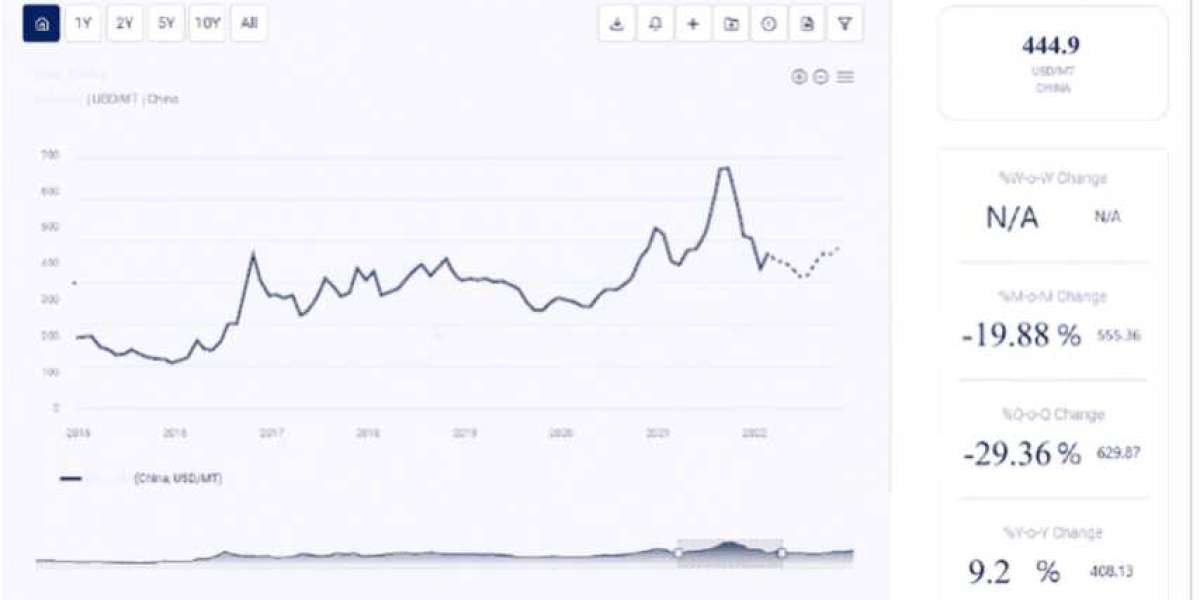Permeable concrete, also known as pervious concrete or porous concrete, is a special type of concrete that allows water to pass through its surface, providing an effective solution for stormwater management and reducing surface runoff. It is a crucial material in modern construction, particularly in environmentally conscious building projects, as it offers a sustainable approach to managing rainwater. Permeable concrete is commonly used in applications such as pavements, parking lots, driveways, sidewalks, and roadways.
While permeable concrete offers significant environmental and functional benefits, its production cost is influenced by several factors, including raw material prices, labor costs, equipment, energy consumption, and production scale. Understanding the factors that contribute to permeable concrete production cost is essential for both manufacturers and end-users, as it enables better project planning and cost optimization. This article explores the various aspects that impact the cost of producing permeable concrete, the materials involved, production processes, and strategies to manage costs efficiently.
What is Permeable Concrete?
Permeable concrete is a type of concrete that is designed to allow water to pass through its surface and into the ground below, rather than running off as it does with traditional concrete. It is made by mixing cement, water, and aggregates (such as gravel or crushed stone) in a way that creates voids within the material. These voids allow water to flow through the concrete, helping to reduce surface water runoff and promote groundwater recharge.
Unlike conventional concrete, which is dense and impermeable, permeable concrete has a unique structure with high porosity. The water flows through the gaps between the aggregates, reducing the need for stormwater management infrastructure, such as retention ponds and drainage systems.
Some of the primary benefits of permeable concrete include:
- Stormwater Management: It helps manage rainwater runoff, preventing flooding, soil erosion, and water pollution.
- Groundwater Recharge: The ability to allow water to pass through and seep into the ground promotes groundwater replenishment.
- Reduction of Urban Heat Island Effect: Due to its porosity, permeable concrete has a higher capacity for heat dissipation compared to conventional concrete, helping mitigate the urban heat island effect.
- Improved Drainage: It provides a natural way for water to drain away from surfaces, reducing the need for external drainage infrastructure.
Enquire For Regular Prices: https://www.procurementresource.com/production-cost-report-store/permeable-concrete/request-sample
Key Factors Affecting Permeable Concrete Production Cost
The production cost of permeable concrete can vary based on several factors, ranging from raw material prices to labor and equipment costs. Below are the key factors that influence the overall production cost of permeable concrete:
1. Raw Materials
The primary raw materials for permeable concrete are cement, aggregates, and water. However, the types of aggregates used, their size, and the mix design play a significant role in the cost structure.
Cement: Cement is the binding material in concrete, and its cost represents a significant portion of the total production cost. The price of cement can vary by region and is influenced by factors such as transportation costs, availability, and demand. In many cases, cement prices are subject to fluctuations due to global supply chain issues, energy prices, and local market conditions.
Aggregates: Aggregates for permeable concrete typically consist of larger particles, such as gravel or crushed stone, which are carefully selected to ensure the desired level of porosity. The cost of aggregates can vary depending on factors such as availability, quality, and proximity to production facilities. In some regions, high-quality aggregates may be in limited supply, driving up the cost of this raw material.
Admixtures and Additives: In some cases, additional chemical admixtures or additives are used to improve the workability, strength, and durability of permeable concrete. These may include plasticizers, superplasticizers, and air-entraining agents. While these admixtures help improve the properties of the concrete, they add to the overall production cost.
Water: Water is a crucial ingredient in concrete production, and its cost may vary depending on location and availability. In areas where water is scarce or subject to high utility costs, the price of water used in concrete production can increase the overall cost of permeable concrete.
2. Labor Costs
Labor costs are an essential factor in the production cost of permeable concrete. Skilled labor is required for tasks such as mixing, pouring, and finishing the concrete, as well as controlling the quality and consistency of the mix. The labor costs associated with permeable concrete production can be higher compared to traditional concrete due to the additional steps required to achieve the desired porosity and handling the material’s unique properties.
Skilled Labor: The production of permeable concrete requires expertise in mix design, quality control, and installation techniques. Skilled laborers and technicians who are trained in the unique challenges of permeable concrete production tend to command higher wages. Additionally, specialized workers may be required for tasks like formwork, finishing, and ensuring proper curing.
Project-Specific Labor: Labor costs can also vary depending on the complexity of the project. For example, large-scale projects may require more laborers and longer working hours, which would increase labor costs.
3. Equipment and Technology
The production of permeable concrete often requires specialized equipment and technology to ensure the correct mix design, proper compaction, and adequate curing. These costs can include:
Mixing Equipment: The mixing of permeable concrete requires specific mixers capable of handling the larger aggregates and ensuring a consistent mix with the desired void content. The use of specialized mixers and other equipment can increase capital costs.
Formwork: Formwork is needed to shape the concrete before it sets. While traditional concrete may require less intricate formwork, permeable concrete often demands more precision to ensure proper porosity. The cost of formwork may vary depending on the complexity of the project and the type of surface being created.
Curing Equipment: Curing is essential for achieving the desired strength and durability of concrete. In some cases, permeable concrete may require specialized curing techniques, such as moist curing or curing under controlled conditions, which could add to the production cost.
Transportation Equipment: Transporting permeable concrete to the project site requires appropriate vehicles, and the cost of transportation depends on the distance, the volume of concrete required, and the availability of trucks.
4. Energy Consumption
Energy is another key factor that can significantly impact the production cost of permeable concrete. The production process involves various stages, such as mixing, transportation, and curing, all of which require energy. Electricity costs, fuel costs for transportation, and heating or curing requirements for the concrete contribute to the overall energy consumption of the production process.
Energy-Efficient Production: The implementation of energy-efficient technologies, such as more efficient mixers or the use of renewable energy sources, can help reduce energy costs. However, adopting such technologies may require an initial investment, which could influence the cost structure.
Heating/Curing: In colder climates, additional energy may be required to maintain optimal curing conditions for the concrete, especially during winter months. This can result in higher energy consumption and, in turn, higher production costs.
5. Production Scale and Automation
The scale of production can also have a significant impact on the unit cost of permeable concrete. Larger production volumes typically lead to lower per-unit costs due to economies of scale. However, the level of automation in the production process can also influence costs:
Small-Scale Production: Smaller production facilities may have higher per-unit costs due to limited automation, labor-intensive processes, and less efficient use of resources. For smaller-scale operations, achieving consistent quality and porosity in the concrete mix can require more oversight and manual intervention.
Large-Scale Production: Larger production facilities that utilize automated systems and have the ability to produce larger batches of permeable concrete can achieve lower per-unit costs. Automation improves efficiency, reduces labor requirements, and ensures greater consistency in the final product.
6. Transportation and Delivery Costs
Transporting permeable concrete to construction sites involves costs related to the transportation of materials to the production plant, as well as the delivery of finished concrete to the project location. The distance between the production site and the construction site can significantly impact transportation costs. Additionally, transporting larger volumes of concrete may require specialized vehicles and equipment, which can add to costs.
7. Quality Control and Testing
Ensuring the quality of permeable concrete is crucial for achieving the desired porosity, strength, and durability. This often involves conducting various tests and quality control measures to ensure that the concrete meets industry standards and project specifications. The cost of quality control can vary depending on the level of testing required.
Testing for Porosity and Strength: Testing the permeability of concrete and verifying its compressive strength are essential to ensure its performance in the field. These tests typically require laboratory equipment and skilled technicians, which adds to production costs.
On-Site Quality Assurance: Some projects may require additional testing and inspections on-site to ensure that the concrete mix meets specifications. These costs can add up, especially in large-scale or high-stakes projects.
Cost Comparison with Traditional Concrete
While permeable concrete typically comes with a higher initial cost than traditional concrete, the long-term benefits—such as reduced stormwater management costs and environmental sustainability—can offset the higher production costs. Traditional concrete is usually less expensive due to its straightforward production process and lower material requirements. However, the environmental costs associated with conventional concrete, such as stormwater runoff and the need for extensive drainage infrastructure, are not factored into the initial production cost.
In comparison, permeable concrete may offer a higher upfront cost, but it can save on long-term infrastructure costs and provide environmental benefits, such as reducing flooding and promoting groundwater recharge. Additionally, the material’s ability to contribute to LEED certification (for sustainable building projects) can be seen as an added value for many projects.
Permeable concrete is a valuable material for sustainable construction and stormwater management, but its production cost is influenced by several factors, including raw material costs, energy prices, labor, equipment, and production scale. While permeable concrete typically costs more to produce than traditional concrete, its environmental benefits and long-term cost savings in infrastructure make it an attractive option for many building projects. By understanding the key factors that affect production costs and exploring strategies for optimizing production efficiency, businesses can better manage the cost of permeable concrete and maximize its value in sustainable construction projects.
Contact Us:
Company Name: Procurement Resource
Contact Person: Leo Frank
Email: [email protected]
Toll-Free Numbers:
- USA Canada: +1 307 363 1045
- UK: +44 7537171117
- Asia-Pacific (APAC): +91 1203185500
Address: 30 North Gould Street, Sheridan, WY 82801, USA








